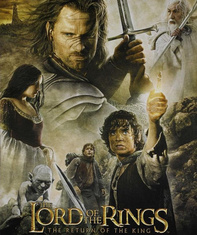
Best Pictures #05: The Lord of the Rings: The Return of the King
First published: Sunday October 22nd, 2023
Report this blog
Movie #05: The Lord of the Rings: The Return of the King
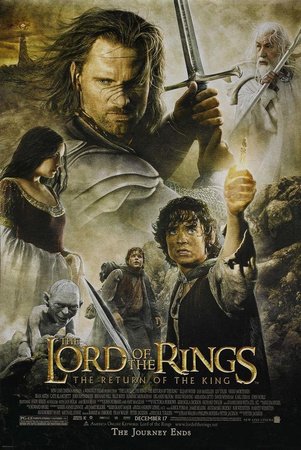
I really wanted to save this movie to be one of the milestones, but when I saw that my local movie theater was going to be showing it this month, I knew I had to go see it. And now here I am, mere hours after leaving the theater (as of writing this) I have so much I want to say. So before I get too ahead of myself, find a comfy seat and a snack because this review is going to be as brief as the film it's about. :)
The Lord of the Rings trilogy, now twenty years old at this point, still remains a cultural milestone and is widely regarded as one of the finest examples of filmmaking ever made. The three films, released between 2001-2003, were filmed at the same time, a first at the time, and garnered massive critical and box office acclaim. Director Peter Jackson had brought to the screen J.R.R. Tolkien's novels, which up until that point had been commonly thought of as "unfilmable." The scale of the books' worldbuilding, from its many languages created by Tolkien himself, to the geography and locations, were the kind of massive visions rarely seen on the big screen, yet Peter Jackson and his crew proved to be more than up to the task. The first two films, 'The Fellowship of the Ring' (my personal favorite film of all time) and 'The Two Towers' were both well received upon their releases, with 'Fellowship' garnering a whopping thirteen Oscar nominations and four wins, and 'Two Towers' receiving six nominations and two wins. The films were also smash hits at the box office, with 'Fellowship' making $900 million and 'Two Towers' making $950 million, the third highest ever at that time. This left audience and critic expectations high for the final chapter of the trilogy, 'Return of the King' which was set to release in December of 2003. Upon release, 'Return of the King' not only met expectations, but it blew them out of the water. It quickly became the highest grossing film of 2003 and the second highest grossing movie of all time, bringing in $1.15 billion, becoming only the second movie to cross the billion dollar mark (the other being 'Titanic' six years prior). The momentum continued into awards season, where the film was nominated for eleven Oscars, going on to sweep the night, winning every single one, a feat never seen before or since.
One of the many aspects of this film that stand out to me upon my most recent rewatch is just how outstanding the performances are in this film. If you hadn't seen these films before, you might guess that because they're fantasy the acting isn't nearly on the level of the production or costumes or visual effects, but you would be extremely mistaken. Every actor in this film knocks it out of the park, with a few noteworthy standouts, whom I'll get to in a second. This film is absolutely massive, and there are so many important characters in play here, like a chessboard but magnified significantly, and every single role is played to perfection, regardless of screentime. For example, despite having less than ten minutes of screentime, Karl Urban's portrayal of Eomer is commanding, gripping and, in one scene I won't spoil, extremely moving. But the three actors in this film I think stand out tall above the rest are Viggo Mortensen as Aragorn, Sean Astin as Samwise Gamgee, and John Noble as Denethor.
First, Viggo Mortensen. Despite making up a part of one larger story, each film in this trilogy has, in my opinion, one character at the forefront. 'Fellowship' is Frodo's movie, 'Two Towers' is Gollum's movie, and it is only fitting that 'Return of the King' is Aragorn's movie. Aragorn, the heir of a broken line of kings and heir to the throne of Gondor faces many struggles in this trilogy, but it is this film in which his greatest struggles all come to a head. He must defeat the Dark Lord Sauron and his armies of Mordor, prevent the race of men from perishing and do all of this so he can reunite with Arwen, his elven love. So, no pressure. Viggo Mortensen is given so much more to do in this film and he delivers on every level. From his strength and skill in every fight scene to his gentleness in the tender scenes, he displays perfectly the range of his character. I particularly love the scenes he shares with Eowyn, and I am humbly requesting that Viggo Mortensen narrate audiobooks because his voice is one of the most soothing and comfortable things I have ever listened to in my entire life... Lastly, Aragorn gives a speech near the climax of the film (vague because again no spoilers) and it still makes me want to charge into battle to this day, and I've heard it so many times I can quote it! And I haven't even mentioned his singing in these films! I still think it's a shame Mortensen never got any real awards consideration for this role, he would have been a deserving Lead Actor nominee for this performance.
Who doesn't love a great antagonist? This trilogy has no shortage of characters to oppose our heroes, but one in particular stands out to me in this film. Lord Denethor, father of Boromir, Sean Bean's character in 'Fellowship' is an unexpectedly challenging adversary given the fact that he should be one of the protagonists, but he has lost all of his hope and now leads the city of Minas Tirith from a place of fear, loss and cowardice. He feels like a Shakespeare antagonist, a once good but proud character who has been corrupted by the forces of darkness and now is but a shadow of the person he once was. John Noble, a stage actor by training absolutely understood the role here, and his ability to switch between the cruelly cold and frightened sides of his character will never cease to amaze me. The first time we see this character, he appears weak, broken and full of sorrow, but it doesn't take much from Gandalf for Pippen (the audience) to see the calculating, power-hungry side of him. Until the last time we see him on screen, Noble's performance makes us feel both anger and pity towards this tragic figure, a feat masterful in its execution.
And now we come to Sean Astin's Samwise Gamgee, the MVP of this film, in a manner of speaking. After giving his speech at the end of 'Two Towers' (a speech that never fails to bring me to tears btw) one could easily assume we have seen the peak of Sam's emotional impact. Oh boy how that couldn't be further from the truth. Sam is the glue holding Frodo together in this film. By this point, the Ring has corrupted Frodo significantly, growing heavier every single step they get closer to Mordor, and wearing down Frodo more and more with each passing day. And by his side the entire way is Sam, the most loyal gardener in Middle Earth (or any other). Sean Astin brings such a warm, tender heart to Sam, and it is this warmth that rescues the viewer and Frodo from the darkest pits of Mordor and most frightening horrors of Cirith Ungol. But it is honestly in Sam's darkest moments that Sean Astin really shines. One of his two best scenes in this film comes immediately after the pair's encounter with Shelob and Sean Astin's tears and despair break my heart every single time. The second moment he has, in which he shows just how devoted he is to Frodo and their goal is truly one of the greatest movie moments ever put to screen (vague, spoilers y'know the drill). I firmly believe that Sean Astin not only should have received an Oscar nomination for this film, but I believe he should have WON. His performance is THAT GOOD!
Now that the acting is out of the way, let's change things up and talk about how incredible the visual effects are! Firstly, the pure scale of the visual effects work being done here is monumental, and we need look no further than the number of VFX shots in this film to see that. 'Fellowship of the Ring' had roughly 500~ VFX shots, 'Two Towers' had a little over 900, and 'Return of the King' had over 1,500. These shots included everything from compositing shots together to make the Hobbits and Dwarf seem smaller than normal people, to creating the demon spider Shelob. But arguably the most impressive piece of visual effects in this movie still remains the motion capture work done to bring Gollum to life. This movie is twenty years old and the animation used for Gollum still holds up masterfully to this day. He doesn't feel like any of the fake CGI characters we are so used to seeing in this day of moviemaking, and instead feels fully fleshed out and real. Of course, the performance given by Andy Serkis lends a great deal of realism to the character, as without him this character would be a far cry from the one we see on screen. Another facet of the visual effects used to tremendous effect here is how well they blend miniature shots with CGI and blue/green screen shots of people. It's techniques like this that make Minas Tirith or Osgiliath feel so real and alive. But one of the biggest aspects that helps the visual effects department in this task is the sheer scale and quality of the production design.
Oh, the production design. Never have I more intensely yearned to be able to dive straight through the screen to live in a world created for the movies than I have with these films. The sets for these movies continue to blow my mind every time I see the films or learn more about what went into making them. Edoras for example, was built on location in one of the most remote parts of New Zealand in the middle of winter. It's a massive set that could easily hold a few hundred people (or at least the cast, crew, and all their equipment) and they went the extra mile to build it for real instead of relying on the visual effects department. But easily the most impressive production designed was for Minas Tirith, the great city of Gondor. In order to bring this massive city to life, they used a combination of miniatures, "bigatures" (miniatures that were anywhere from 8-25' tall and wide) and a series of expansive sets to film in, which, once layered together in the editing process would appear to be one giant, cohesive city. The locations seen in this film also feel deeply lived in, with a rich history felt in every corner of each set. Minas Morgul, for example, one of the darkest places in all of Middle Earth had once been a city of men, and the architecture reflects this, while aging it and corrupting it the way the evil of Mordor would have influenced it. In total, the production designers did a magnificent job at crafting and building the sets that immerse the audience deeper into this world, making each viewer feel as if they've only seen a glimpse into this sprawling world.
And now, for the craft that expertly combines the above two aspects of the filmmaking process: cinematography. Somehow, one of the few Oscar categories this film was not nominated for was cinematography, which seems like an actual crime considering that not only did the first film WIN, but this film arguably looks better than the first two! The cinematography of 'Lord of the Rings' is as diverse as the world it shows us. The scenes set within Rohan are often basked in a warm, golden light, not unlike the warmth of a fire on a cool summer's evening. This contrasts with the more harsh light of Gondor, Minas Tirith in particular, which has the feel of a cold sunny day. These both stand in stark contrast with the dank, dark and out-of-depth feeling that is evoked by the scenes set in Shelob's lair, Mordor or Minas Morgul. But there's one consistent characteristic with all of these scenes and that is the expert camerawork. Whether it's massive aerial shots that take us from impossibly high heights and over the city walls to battle sequences in which we follow a rider through chaos and destruction while still being able to make out all of what is going on. But perhaps my favorite piece of cinematography in this film is in the 'Lighting of the Beacons' sequence. With the score as our only voice, we see the beacons of Gondor lit in a chain reaction across the mountains of Middle Earth in a stunning piece of filmmaking that never fails to put a massive grin on my face.
Now for me to talk about my favorite aspect of these films: the music! I could honestly write dozens of paragraphs about the music in these films, but I'll spare all of you that and just give my "brief" thoughts for 'Return of the King' alone. Calling the score to these films "movie music" hardly does them justice, as they feel operatic, something we would expect to hear from Wagner at times, and they have a grandeur and scale the likes of which I have never heard on screen before or after. Howard Shore's use of choirs, both male and female, as well as solo vocalists is on a level no other film composer has ever come close to. Shore often uses the languages of Middle Earth to give lyrics to his vocalists, using writings from Tolkien himself to poems and songs written specially for the score in many different languages. The musical track titled 'Siege of Gondor' is a phenomenal example of the full breadth of the music in this film. When the Nazgul arrive, their piercing shrieks filling the air, the choir sounds over the orchestra, singing in Sindarin of the horrors of the Nazgul, the sheer power of the music feels like a tidal wave of sound and adrenalin: the battle is at its fiercest and most terrible hour, for the terrors of the Nazgul have arrived. Contrast this with 'The Lighting of the Beacons,' a piece that brings hope in its most exhilarating and energetic form, or 'The Eagles,' a piece that uses a female choir and soloist to evoke relief, sadness and fellowship in the final hours. I also need to give special note to Shore's use in all three films of a young male soloist. Several times throughout his scores he will use a male soloist around 10-12 years old and the tracks in which this technique is used are some of the most heartstoppingly beautiful in the entire trilogy ('For Frodo' and the ending of 'Osgiliath Invaded' are perfect examples if you'd like to hear for yourself). This score is perfection and no composer will ever top it.
The other side of the music in these films is the songs written specifically for the endings. Each film has one, 'Fellowship' has "May it Be" by Enya, 'Two Towers' has "Gollum's Song" by Emiliana Torrini, and 'Return of the King' has "Into the West" written by Fran Walsh and Annie Lennox (of Eurythmics) with music by Howard Shore. The melody of the song was worked into the score by Shore when Gandalf is telling Pippin about Valinor, the place of peace and beauty that lies after death, and when the characters visit the Grey Havens. The melody is played using cellos and a chorus humming respectively, and feels like a ray of hope in the hours most in need of it. The biggest inspiration for the trio writing this song was a young New Zealand filmmaker named Cameron Duncan, who at the age of 16 had already started a promising career and become friends with Peter Jackson, Fran Walsh and many of the crew. While this film was nearing completion with post-production, Duncan was dying of cancer, and it was his imminent passing that provided the bittersweet lyrics to "Into the West," a farewell song. The song was first performed at Duncan's funeral, just a few short weeks before the premiere of the film, and it brings me to tears every single time I hear it, even outside of the movie. Listen to the song here
Another aspect of these films that was just done so impeccably right were the costumes. Costume designer Ngila Dickson and her team created over 19,000 costumes for the trilogy an absolutely staggering number for any project. Her designs are highly detailed, all made by hand and crafted with extensive knowledge of the peoples and history of Middle Earth, the specific characters wearing each outfit, and their practicality both in the real world and the world of Middle Earth. For example, the uniforms for the soldiers of Gondor had an entire history's worth of detail, including their evolution from the Gondorian armor seen in the prologue of the first film, which took place some three thousand years prior to the events of this film, as well as details about Gondor itself, and roots in real world armor from centuries ago. Costumes are often an overlooked aspect of movie making when the movie in question isn't a period piece with lavish costumes, as costumes are one of the most effective way to immerse the audience into the film and world, and the costumes here are done to perfection, from the mightiest kings to the smallest of hobbits, the histories, personalities, lore, and details are all reflected in their costumes so well that we have all the detail we need without any exposition.
Speaking of exposition, one craft of this movie I have been purposefully leaving for last is the writing. Fantasy films are not known for their excellent writing, but 'Lord of the Rings' is perhaps the greatest exception. Much of the dialogue spoken by Aragorn and Gandalf is quite profound and eloquent, feeling warm and resonant, with a deep understanding of order and wisdom. One of the two monologues Gandalf delivers to Pippen whilst in Minas Tirith still takes my breath away with its sheer poetic beauty. "They guard it because they have hope. A faint and fading hope that one day it will flower. That a king will come and this city will be as it once was before it fell into decay. The old wisdom born out of the west was forsaken. Kings made tombs more splendid than the houses of the living and counted the old names of their descent dearer than the names of their sons. Childless lords sat in aged halls musing on heraldry or in high, cold towers asking questions of the stars. And so the people of Gondor fell into ruin. The line of Kings failed. The white tree withered. The rule of Gondor was given over to lesser men." This is but a taste of the beauty of the writing in these films. Easily one of the best screenplays I have ever had the privilege of hearing on the big screen, and an expert blend of Tolkien's writing and the writing of Jackson, Boyens, and Walsh.
Here at last at the end of my review we come to the closing remarks! If you've made it this far, you very clearly know what my opinions are regarding whether or not this should have won Best Picture, or at least I sincerely hope you do. Not only do I consider this to be overwhelmingly deserving of Best Picture for the year 2003, but I count this amongst the greatest winners of any year period. In fact, in looking at all the winners from the 1920's to the 2020's, there is only *one* film I could be swayed into voting above this one, though you'll have to wait to find out what film that might be hahaha! As you read in my paragraphs above, I personally believe that the eleven Oscars this film won were not only unanimously deserved, but also underselling this film, as I would have given Sean Astin the Best Supporting Actor trophy, and Andrew Lesnie the Cinematography award. But even still, eleven wins is nothing to scoff at. If you have somehow managed to not see these films, I implore you to watch them as soon as you possibly can, they are some of the best films you will ever see.
Rating: Easiest 10/10 I have ever given (11/10 if we're being honest)
Did it deserve to win Best Picture?: I don't think my "yes" could be more obvious if I got it tattooed on my forehead.
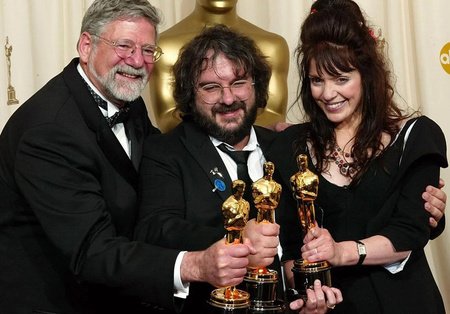
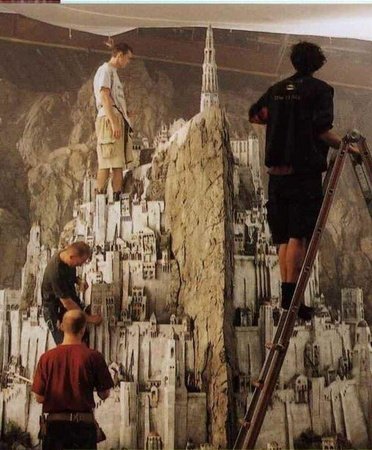
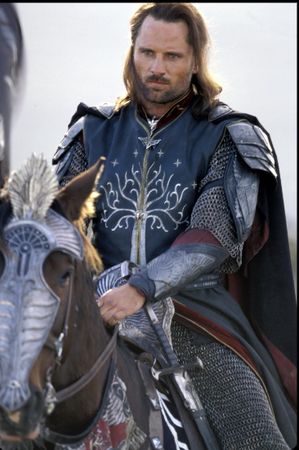
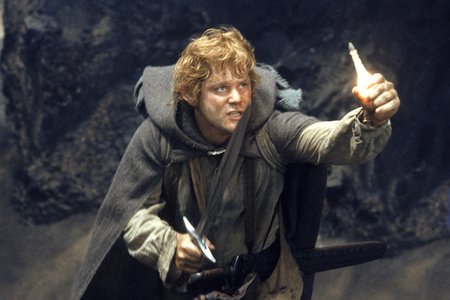
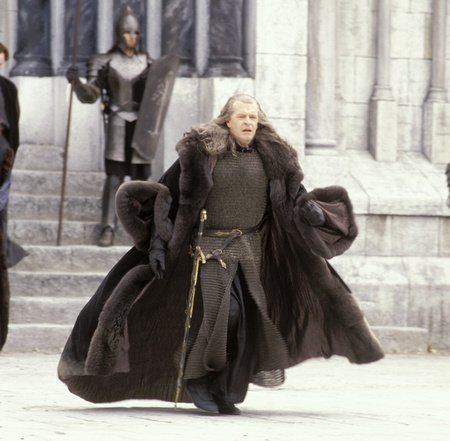


My favourite scenes from the movie is when Aragorn is crowned the King of Gondor and later when everyone bows to the four brave, little Hobbits. Tears start rolling from my eyes whenever I see that scene. I also love the scene where Pippin sings and Denethor eats while Faramir and others are attacking Osgiliath. And of course, that scene where Rohan's army arrives and take over the Orcs.
And speaking of music, the entire LOTR soundtrack is mesmerising! People scream "LoFi is good" and I say just listen to "Concerning Hobbits". Also, the Rohan theme and the Fellowship theme. God, I love the music of the trilogy! To end this comment:
Et Eärello
Endorenna utúlien
Sinome maruvan ar Hildinyar tenn'
Ambar-metta!